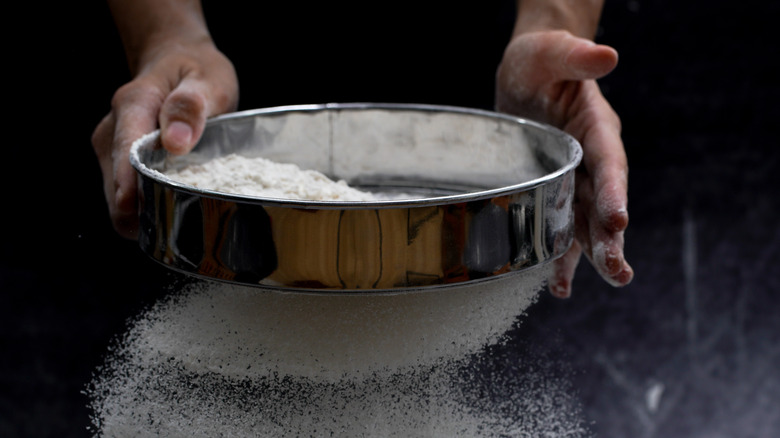The Kitchen Tool Pastry Chefs Use To Smooth Tart Shell Edges
Tarts are the epitome of elegance in the world of desserts. They showcase a perfect harmony of flavors, with their flaky crust and luscious fillings. But one key factor in achieving the ultimate tart is having a crisp, clean edge on the tart shell, which not only elevates the appearance but also enhances the texture. A well-defined edge results in a satisfying contrast between the tender, flaky layers, and the smooth filling.
But to achieve this level of finesse, you might wonder what the best method is to smooth the top edge of the tart shell. You might be tempted to pick up a knife and shave the pastry down while it is still in the shell. But that is a risky method that can cause the tart to crack and break if you are not careful. You can also end up with an uneven edge if the knife is angled.
Fortunately, there is a simple technique that can make a significant difference.
Why a drum sieve is best
Professional pastry chefs prefer to use a drum sieve to achieve the perfect crisp, clean edge on tart shells, chef Christina Ferrari told Pastry Arts Magazine. Also known as a tamis sieve, this kitchen tool consists of a cylindrical frame with a fine mesh screen that allows for even sifting and precise control. But to create the desired edge on a tart shell, pastry chefs use it to carefully shave the pastry.
Using a gentle sawing motion, they move the shells back and forth across the mesh, allowing the excess pastry to fall through the sieve. As the excess dough is removed, the sharp edge of the mesh cuts through the pastry, leaving a precise, sharp edge on the tart shells. If you try this in your own kitchen, be sure to work gently and patiently, as applying too much pressure can cause the pastry to crumble and break.
So, try using a drum sieve and put the ultimate method for perfect edges to the test. Impress your guests and satisfy your taste buds with perfectly crafted tart shells, thanks to the unassuming magic of the drum sieve.

